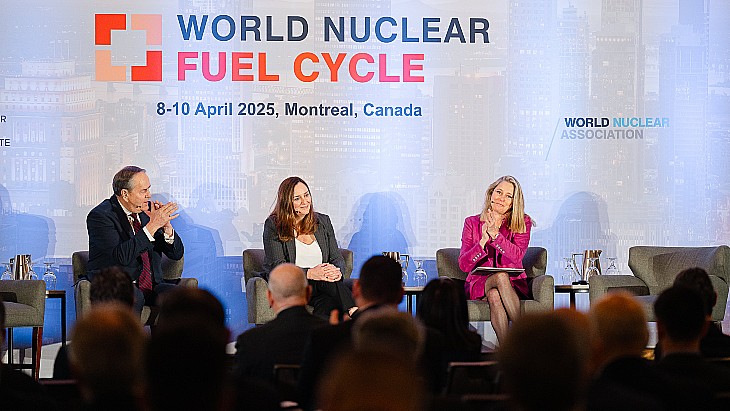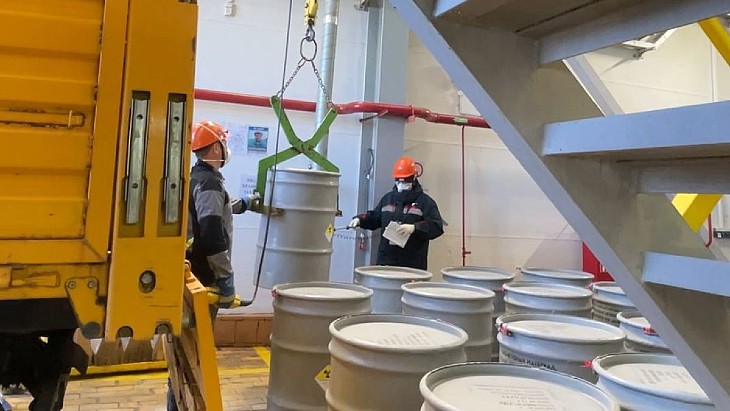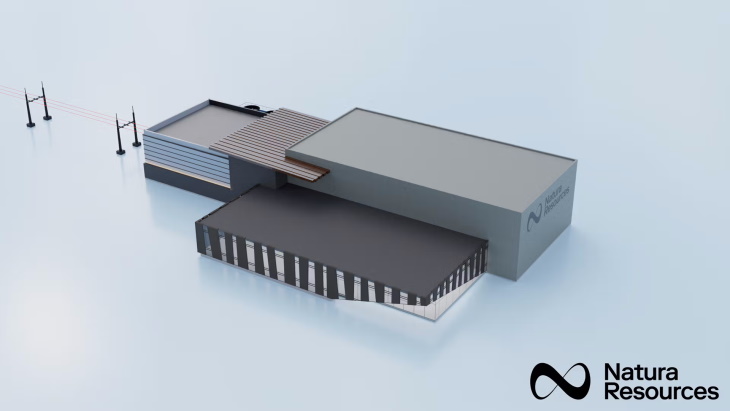Sandstone
Sandstone uranium deposits occur in medium- to coarse-grained sandstones deposited in a continental fluvial or marginal marine sedimentary environment. Impermeable shale/mudstone units are interbedded in the sedimentary sequence and often occur immediately above and below the mineralized sandstone. Uranium is precipitated under reducing conditions caused by a variety of reducing agents within the sandstone including: carbonaceous material (detrital plant debris, amorphous humate, marine algae), sulphides (pyrite, H2S), hydrocarbons, and interbedded basic volcanic ash with abundant ferro-magnesian minerals (e.g. chlorite).
There are five main sub-types of sandstone deposits, often mixed:
- Basal channel deposits – wide channels filled with permeable sediments. Examples are Dalur and Khiagda (Russia), and Beverley and Honeymoon (South Australia).
- Tabular deposits – irregular, elongate lenticular bodies parallel to the depositional trend, deposits commonly occur in palaeochannels incised into underlying basement rocks. Examples are Akouta, Arlit, and Imouraren (Niger), Hamr-Stráž pod Ralskem (Czech Republic) and those of the Colorado Plateau (USA).
- Roll-front deposits – arcuate bodies of mineralization that crosscut sandstone bedding, often in palaeochannels. Examples are Budenovskoye, Tortkuduk, Moynkum, Inkai and Mynkuduk (Kazakhstan) and Crow Butte and Smith Ranch (USA).
- Tectonic/lithologic deposits – occur in sandstones adjacent to a permeable fault zone. Examples are in the Lodève District (France) and the Franceville Basin (Gabon).
- Mafic dykes or sills in Proterozoic sandstones – examples at Matoush (Canada) and Westmoreland (Australia).
Sandstone deposits constitute about 28% of world uranium reasonably assured resources and 40% of inferred resources, and are of major economic importance in Kazakhstan, Uzbekistan, USA and Niger. Orebodies of this type are commonly low to medium grade (0.05-0.35%U) and individual orebodies are small to medium in size (ranging up to a maximum of 50,000 tU). Roll-front sub-types are mined by in situ leach (ISL) methods. Imouraren (Niger) and some Kazakh deposits are larger. The main primary U minerals are uraninite and coffinite.
The USA has large resources in sandstone deposits in the Western Cordillera region, and most of its uranium production has been from these deposits, recently by in ISL. The Powder River Basin in Wyoming, the Colorado Plateau and the Gulf Coast Plain in south Texas are major sandstone uranium provinces. Other large sandstone deposits occur in Niger, Gabon (Franceville Basin), and in the eastern part of Africa, in the Karoo Formation (Malawi, Tanzania, Zambia, South Africa).
Key Features of Uranium Sandstone Deposits:
Formation:
Uranium is deposited within sandstone as a result of reduction processes, where uranium-bearing fluids encounter reducing agents within the sandstone, such as organic matter or sulfides.
Subtypes:
Sandstone deposits can be classified into subtypes like basal channel, tabular, and roll-front deposits, each with distinct characteristics.
Mineralization:
The primary uranium minerals found in these deposits are uraninite and coffinite.
Geographic Distribution:
These deposits are found in various regions worldwide, including the Western Cordillera region of the USA, the Colorado Plateau, the Powder River Basin in Wyoming, and the Gulf Coast Plain in south Texas.
Economic Importance:
Sandstone deposits are of major economic importance due to their large size, relatively shallow depth, and high value, making them a key source of uranium for nuclear power generation.
Examples:
Major sandstone uranium provinces include the Powder River Basin in Wyoming, the Colorado Plateau, and the Gulf Coast Plain in south Texas, according to the World Nuclear Association. Other significant deposits are found in Niger, Gabon, and in the eastern part of Africa.
Mining Methods:
Roll-front subtypes are often mined using in situ leach (ISL) methods
Uranium Minerals
The major primary ore mineral is uraninite (basically UO2) or pitchblende (U2O5.UO3, better known as U3O8), though a range of other uranium minerals are found in particular deposits. These include carnotite (uranium potassium vanadate), the davidite-brannerite-absite type uranium titanates, and the euxenite-fergusonite-samarskite group (niobates of uranium and rare earths).
Brannerite (uranium calcium titanium iron oxide, basically uranium titanate – UTi2O6 – with some calcium and other elements replacing uranium and some iron, and other elements replacing titanium) is particularly important since it occurs as up to 30% of the mineralization at Olympic Dam and also (<10%) at Valhalla near Mount Isa. It does not dissolve readily in sulfuric acid, and so a substantial proportion is not recovered. Research is being undertaken to improve the recovery of this, which has significant implications for the quantum of Australian recoverable low-cost resources of uranium
A large variety of secondary uranium minerals is known, many are brilliantly coloured and fluorescent. The commonest are gummite (a general term like limonite for mixtures of various secondary hydrated uranium oxides with impurities); hydrated uranium phosphates of the phosphuranylite type, including autunite and ningyoite (with calcium), saleeite (magnesian) and torbernite (with copper); and hydrated uranium silicates such as coffinite, uranophane (with calcium) and sklodowskite (magnesian).







